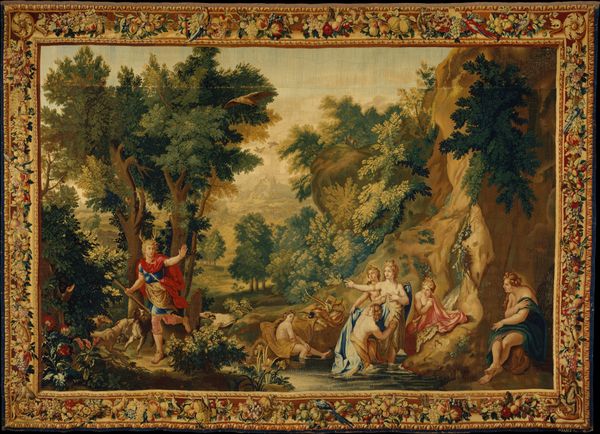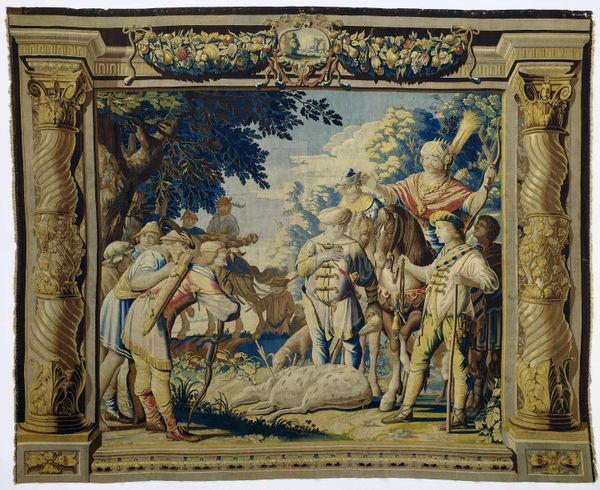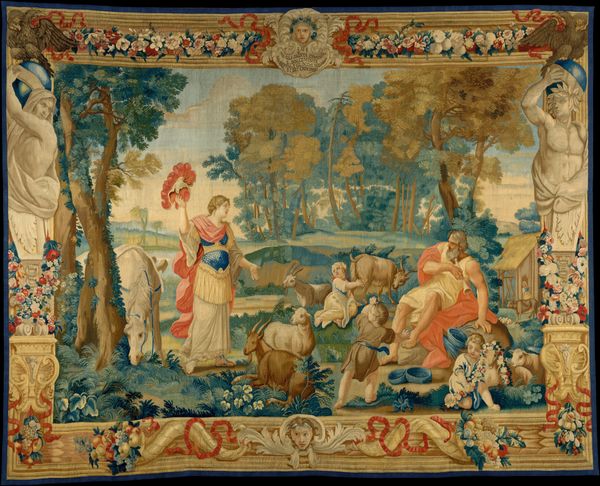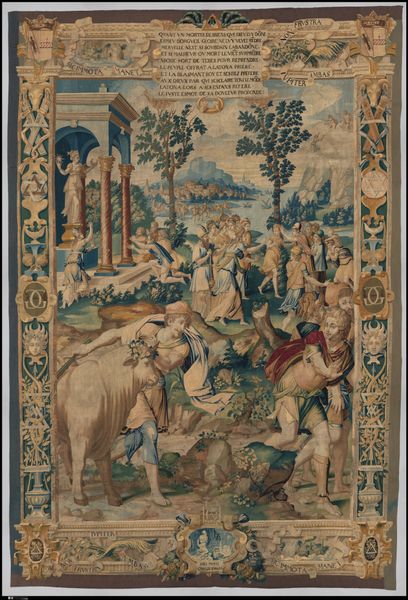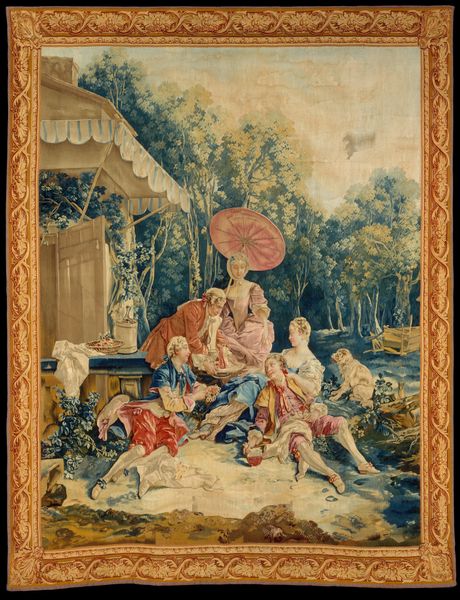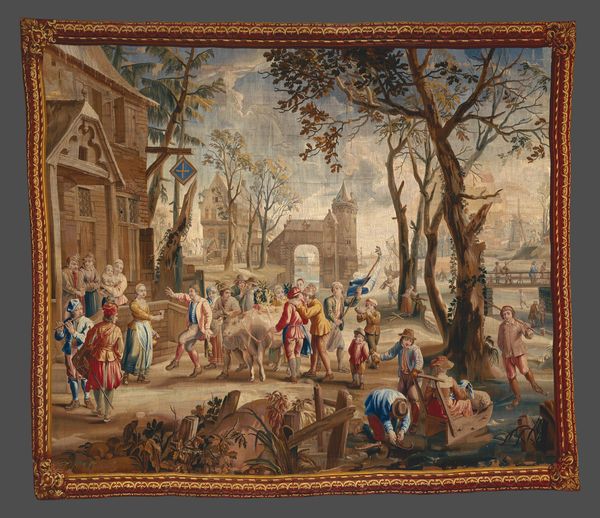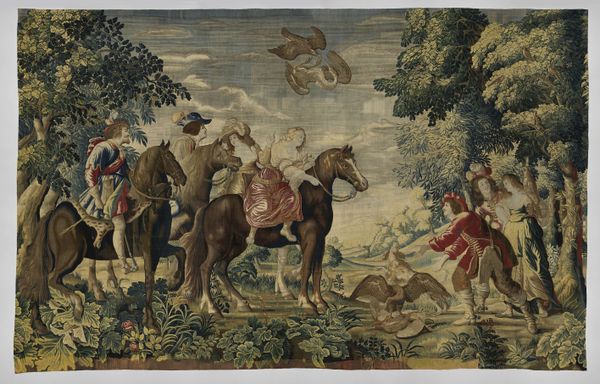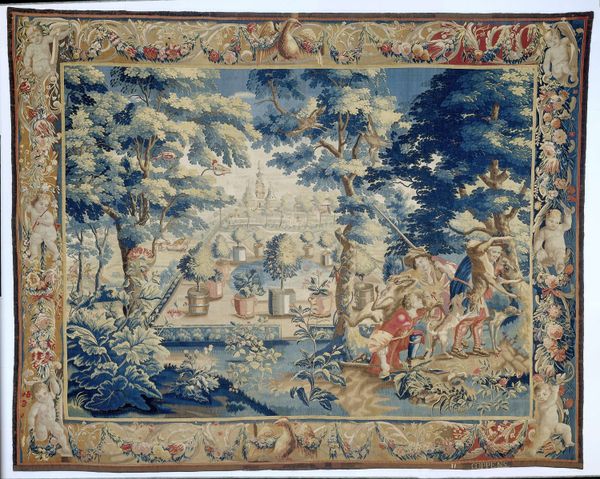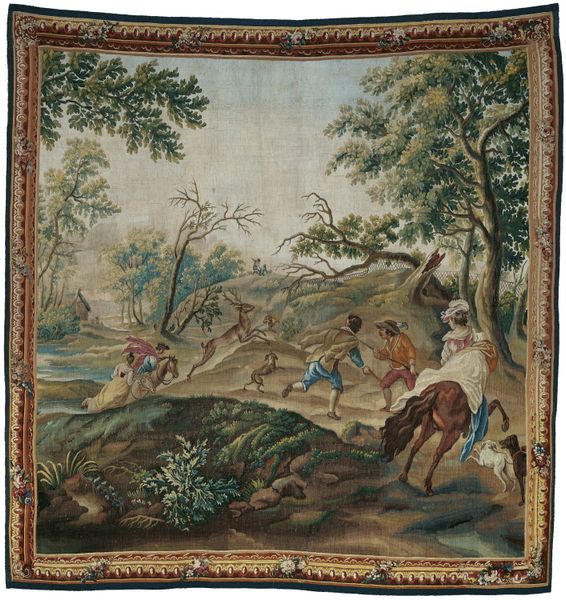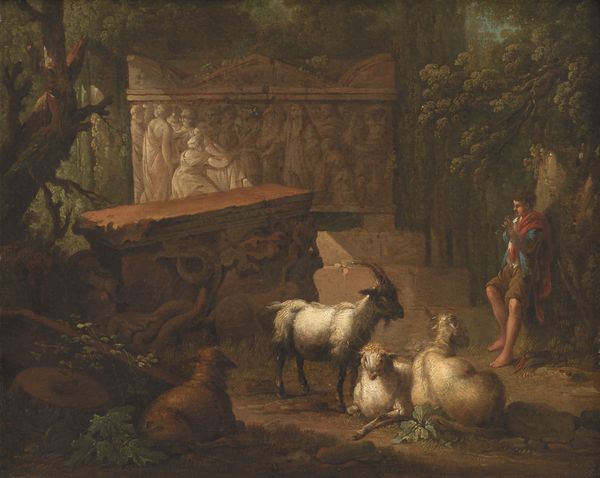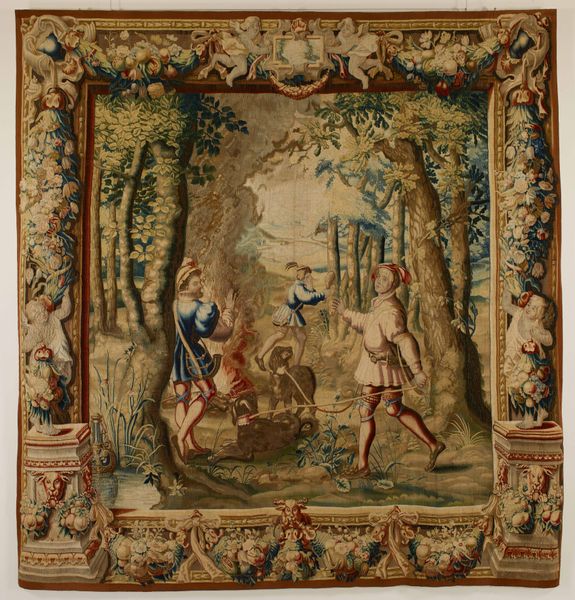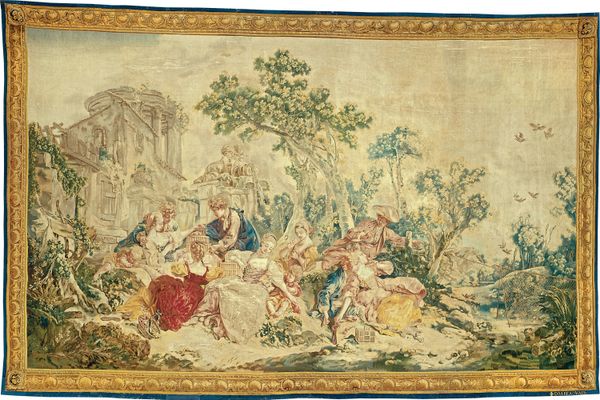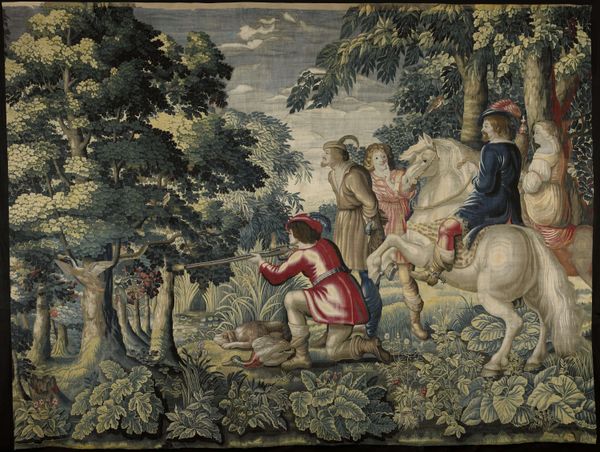
weaving, textile
#
narrative-art
#
baroque
#
weaving
#
landscape
#
textile
#
figuration
#
genre-painting
#
decorative-art
Dimensions: 9 ft. 2 1/4 in. × 9 ft. 6 in. (280 × 289.6 cm)
Copyright: Public Domain
This tapestry, "The Harvest," was woven by Urbanus Leyniers in the early 18th century. It's made of wool and silk, materials that lend themselves beautifully to intricate detail. Look closely, and you'll notice the incredible texture achieved through weaving. The wool gives a sense of depth and richness, while the silk adds highlights, particularly in the figures’ clothing and the sky. The process of creating a tapestry like this was incredibly labor-intensive, requiring skilled artisans to painstakingly interlace threads on a loom. Each color was carefully chosen and placed to create the final image. This wasn’t just a decorative object; it was a statement of wealth and status. Tapestries like "The Harvest" were often commissioned by wealthy families to adorn their homes, showcasing not only their taste but also their economic power. The scene itself depicts an idealized view of rural life, masking the hard labor and social inequalities inherent in agricultural production. Understanding the materials and processes behind this tapestry allows us to see it not just as a pretty picture, but as a complex object embedded in its social and economic context.
Comments
No comments
Be the first to comment and join the conversation on the ultimate creative platform.
